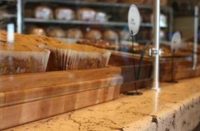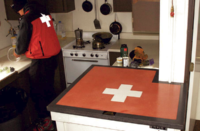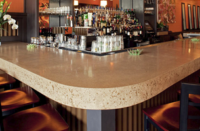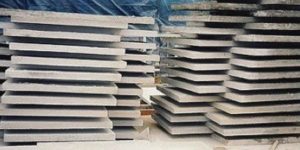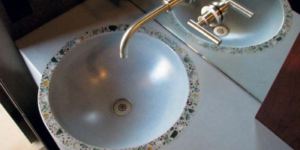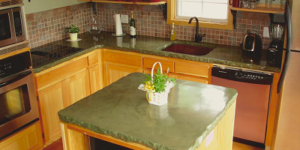 With the economy in doldrums, it is commonly accepted that homeowners are looking to stay in their homes longer rather than sell. Therefore, the renovations they are undertaking are seen as representing their tastes rather than what they hope a buyer may like.
With the economy in doldrums, it is commonly accepted that homeowners are looking to stay in their homes longer rather than sell. Therefore, the renovations they are undertaking are seen as representing their tastes rather than what they hope a buyer may like.
That goes for concrete countertops as well.
“One of the byproducts of the (current) real estate market going completely south is that people are not rebuilding for resale anymore,” says Rune Borgir, founder of Cement Elegance, based in Bend, Ore. “A lot of our clients, especially those in their 30s and 40s, are getting much, much bolder designing a home, especially for their desires and their needs.”
 Recently, he says, one challenging project called for his shop to create a crimson Roman-style counter and island stops that a pair of homeowners had an artist develop. The rust-colored leafy design with wide curves featured patterns that expanded and narrowed into sharp points and were inlaid with pebbles and glass.
Recently, he says, one challenging project called for his shop to create a crimson Roman-style counter and island stops that a pair of homeowners had an artist develop. The rust-colored leafy design with wide curves featured patterns that expanded and narrowed into sharp points and were inlaid with pebbles and glass.
Borgir says he was able to meet the design specifications by using “engineered cement,” which includes portland cement mixed with larger sand particles. That approach allows the pancake batter-like mix to be poured right side up and spread evenly. The “cement” also dries much faster than traditional concrete and is just as durable.
 |
 |
To create the leafy design, patterns were traced and cut out of 4-by-8 wood door skin sheets, which was then placed on top of small steel support bars over the freshly poured cement mixture. The pebbles and glass were dropped through the cut-out pattern in each door skin and pressed into the mixture. After curing, the entire surface was ground down until the aggregate pattern was exposed. A crimson dye was then sprayed over the surface, using the pieces cut out of the door skin to protect the leafy-shaped aggregate pattern, giving the project its color and definition.
“This is not the kind of thing people would do if they were looking to resell their house,” Borgir says. “Those colors are pretty bold.”
He says that concrete countertops are not the only projects with bold colors that homeowners are doing. They are also using cobalt blues, purples, bright red orange, amber and mustard colors on walls and floors. Homeowners, he quickly adds, are also using concrete in showers, vanities, bathtubs and decks.
Borgir, a former general contractor, has been providing custom-crafted surfaces and fixtures in the Bend area since 1997.
Businesses are also picking up on using more color, Borgir says. He says restaurants, coffee shops and designer showrooms are using bolder colors in their countertops and transaction areas.
Environmental concerns over fabrication methods are also starting to be noticed by homeowners and the makers of the dyes used in concrete fixtures, says Borgir. Dye makers have been moving away from using alcohol and acid-toned dyes in favor of using water-soluble materials. “The industry is being very, very responsive,” he says.
Borgir says the water-soluble dyes have improved markedly over the past few years, adding that they now bond as quickly as the other dyes. Sealant manufacturers have also started migrating to greener materials. “The technology’s really improving,” he says.
www.cementelegance.com
